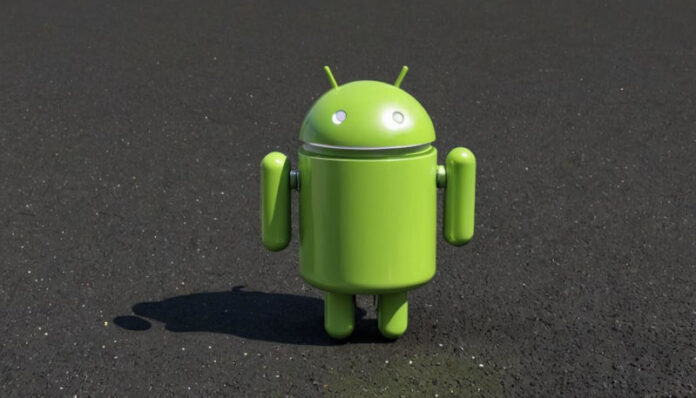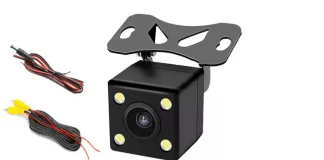When it comes to Android headunits, one of the most common issues drivers encounter is the radio turning off randomly. This can be incredibly frustrating, especially on long drives when music or talk radio can provide a much-needed distraction. However, before you rush off to the repair shop or consider replacing your Android Radio, there are a few troubleshooting steps that can be carried out to try and resolve the issue. The following guidance is aimed at helping you understand the potential reasons behind your car radio turning off and suggesting potential solutions.
Check the Fuses
The function of a fuse is to protect the electrical circuits in your car from excessive current flow that could potentially cause damage. When it comes to your Android Headunit, there are typically two fuses that you should check: the radio fuse and the vehicle fuse. If either of these fuses is damaged or faulty, it can result in your radio turning off randomly. This is because the damaged fuse may not be able to handle the electrical current flow correctly, leading to interruptions. Therefore, it is advisable to replace the 15A or 20A fuses of the car and radio. This is a relatively straightforward and inexpensive process, and there are many online tutorials available if you are unsure of how to do this.
Fuse Inspection and Replacement
The fuses in a car radio and the vehicle itself can often be the culprits behind the radio’s random shutdown. Fuses serve as a line of defence against electrical overloads. They are designed to blow or burn out, preventing excessive current from damaging the electrical equipment, in this case, the car radio. If a fuse is faulty by having a loose connection in the holder or is of poor quality, it could potentially disrupt the functioning of the radio.
A fuse rated at 15A or 20A is typical for a car radio. It’s recommended to replace these fuses as a first step in diagnosing the issue. The reason behind this is straightforward – replacing a potentially faulty fuse is a relatively simple and cost-effective solution. If the problem persists after changing the fuses, it may indicate a more complex issue at hand.
Harness and Port Disconnection
Unplug and Plug the Harnesses: Sometimes, The random shutdown of a car radio is an issue that can be perplexing and frustrating to drivers. It’s a problem that many people encounter, but struggle to understand the reasoning behind it. This article aims to provide an in-depth explanation of why these issues occur and offers practical solutions to address them.
The next step involves unplugging the harnesses or disconnecting the ports from the car radio. Harnesses and ports serve as the ‘communications centre’ for the radio, allowing it to connect with other parts of the vehicle’s electrical system. Over time, these connections can become loose or corroded, which can lead to inconsistent operation or shutdowns.
Unplugging these components and waiting for a while before plugging them back in can reset the connections and clean the contacts, potentially resolving the issue. This simple action of unplugging and plugging back in serves as a basic troubleshooting step, as it can eliminate potential connection issues.
Checking Wiring Connections
Loose wiring can also be a significant cause of random reboots. As cars age, vibrations from the engine and the road can cause the wiring connections to loosen. This can lead to an inconsistent power supply to the Android Headunit, causing it to turn off and on randomly.
Securing the loose connections can help maintain a consistent power flow to the radio, reducing the chances of it shutting down unexpectedly. Hence, the importance of checking the wiring connections cannot be overstated. Connections to the deck, to the CAN-BUS box and the car wiring, have all been shown to be the reason for poor power and subsequent random reboots, at times.
Performing a Hard Reset
Another method to troubleshoot this problem is by performing a hard reset on the Android Headunit. A hard reset often clears any temporary software glitches or system errors that may be causing the radio to turn off. This can be done by using a needle to press the RST hole on the car radio for 30 seconds.
The hard reset is a common fix for electronic devices, as it forces the device to restart and often clears any temporary issues. However, it’s important to note that this fix might not solve more serious hardware or software problems.
Testing the Red Accessory Wire’s Voltage
Testing the voltage of the red accessory wire from the car radio’s power harness after starting the engine is another important step. The red accessory wire is responsible for providing power to the radio when the ignition is turned on. If the voltage is inadequate, the radio may not receive enough power to operate consistently.
A multimeter is a device that measures electrical properties like voltage, current, and resistance. By using a multimeter, set to the DC Volts range, you can accurately gauge whether the red accessory wire is supplying enough voltage to power the radio.
Testing the Yellow Constant Battery Power Supply Wire’s Voltage
Similarly, testing the voltage of the yellow constant battery power supply wire after starting the engine is also crucial. This yellow wire is designed to provide a constant power supply to the radio, regardless of whether the vehicle’s ignition is on or off. As such, it ensures that the radio maintains its settings and presets.
Using a multimeter to measure the voltage of this wire can help identify if it is providing sufficient power to the radio. If the voltage is too low, it could be the reason behind the random shutdowns.
Double-checking the Wiring Connections
It is also advisable to double-check the wiring connections between the car radio and the vehicle. This involves checking three important wires – the red accessory/ignition wire, the yellow constant/battery power wire, and the black chassis ground wire.
The red wire needs to be connected to the accessory/ignition wire from the vehicle or any third-party wire harness you purchased. This ensures that the radio only receives power when the vehicle’s ignition is on, preventing unnecessary battery drain.
The yellow wire should be connected to the 12V constant battery power supply wire from the vehicle or any third-party wire harness. This connection ensures that the radio maintains its settings and presets, even when the vehicle’s ignition is off.
Finally, the black chassis ground wire should be connected to the ground wire from the vehicle or any third-party wire harness. This connection is important as it completes the electrical circuit and allows current to return to the battery, ensuring the radio operates correctly.
Voltage Drops
If the voltage of the battery power supply wire or accessory wire drops below 10V for more than 100 milliseconds, the Android Headunit will reboot. This is because most car radios are designed to operate within a specific voltage range. If the voltage drops below this range, it can cause the radio to reboot or shut down to prevent damage to the internal components.
USB Flash Drives and Navigation
The final point to consider is the use of USB flash drives in the car’s navigation system. If you insert a USB flash drive into the navigation system, you should refrain from formatting the USB flash drive as internal storage. This is because formatting the USB flash drive in this manner can corrupt the file system on the drive, causing it to malfunction.
This malfunction can lead to the navigation system continuously rebooting, which in turn can cause the car radio to turn off randomly. To avoid this issue, it’s advisable to use the USB flash drive as external storage only.
In conclusion, random shutdowns of a car radio can occur due to a variety of reasons. However, by following these steps, you can pinpoint the issue and take the necessary steps to resolve it. Whether it’s replacing a fuse, checking wiring connections, or avoiding formatting a USB flash drive as internal storage, each step provides a practical solution to a potentially complex problem.








